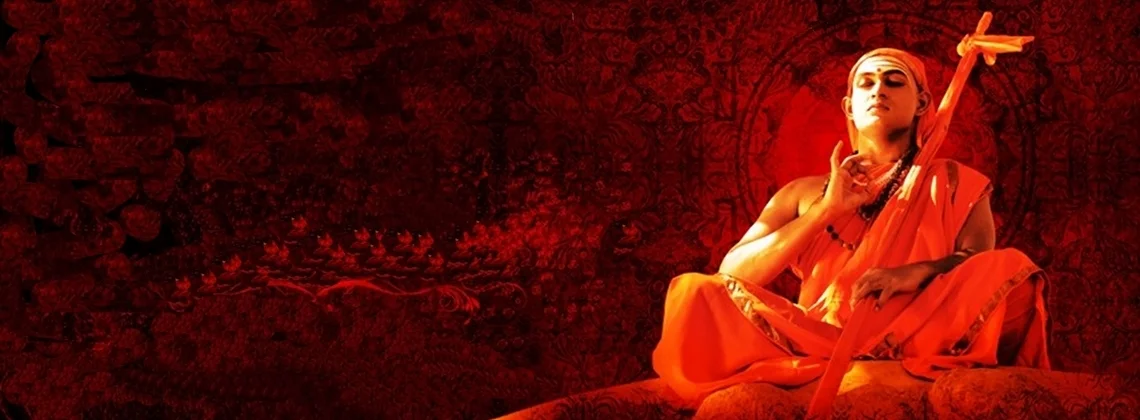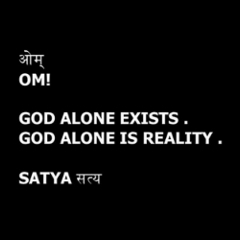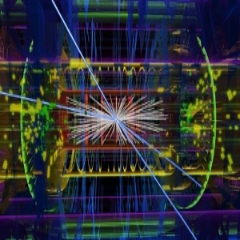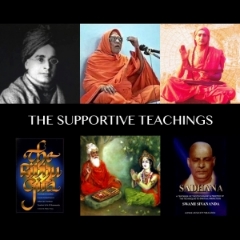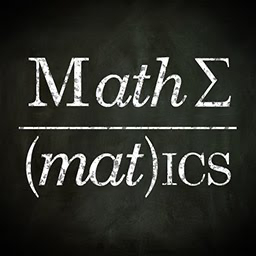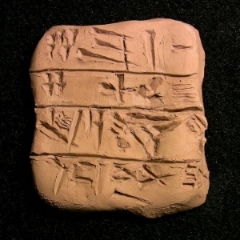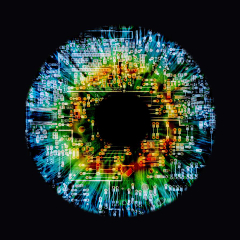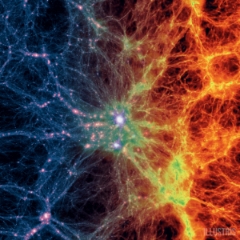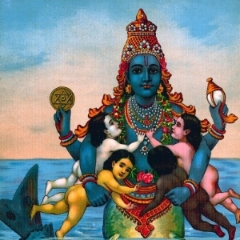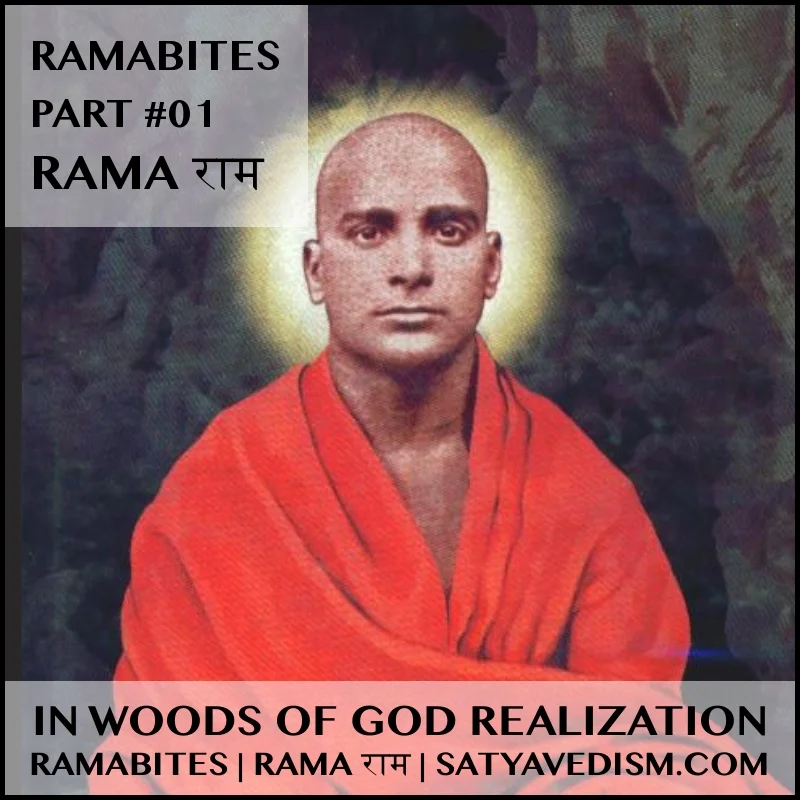TAITTIRIYA UPANISAD | 2.1.1 | PT 2 | AMOETD
| | homeTAITTIRIYA UPANISAD | 2.1.1 | SRI ADI SANKARACARYA
|| PART 2 ||
ANSWER : No , since without implying that knowledge is separable from Brahman , it is referred to as an activity by way of courtesy . ( To explain ) : Knowledge , which is the true nature of the Self , is inseparable from the Self , and so it is everlasting . Still , the intellect , which is the limiting adjunct ( of the Self ) becomes transformed into the shape of the objects while issuing out through the eyes etc ( for cognizing things ) .
These configurations of the intellect in the shape of sound etc , remain objectively illumined by the Consciousness that is the Self , even when they are in an incipient state ; and when they emerge as cognitions , they are still enlightened by that Consciousness * . Hence these semblances of Consciousness — a Consciousness that is really the Self are imagined by the non-discriminating people to be referable by the word knowledge bearing the root meaning ( of the verb to know ) ; to be attributes of the Soul Itself ; and to be subject to mutation .
But the Consciousness of Brahman is inherent in Brahman and is inalienable from It , just as the light of the sun is from the sun or the heat of fire is from fire . Consciousness is not dependent on any other cause ( for its revelation ) , for it is by nature eternal ( light ) . And since all that exists is inalienable from Brahman in time or space , Brahman being the cause of time , space , etc , and since Brahman is surpassingly subtle , there is nothing else whether subtle or screened or remote or past , present or future which can be unknowable to It .
Therefore Brahman is omniscient . Besides , this follows from the text of the mantra :
" Though It is without hands and feet , still It runs and grasps ; though It is without eyes , still It sees ; though It is without ears , still It hears . It knows the knowable , and of It there is no knower . It they called the first , great Person " ( Sv . III . 19 ) .
There are also such Vedic texts as :
" For the knower's function of knowing can never be lost , because It is immortal ; but ( It does not know , as ) there is not that second thing , ( separated from It which It can know ) " ( Br . IV . iii . 30 ) .
Just because Brahman's nature of being the knower is inseparable and because there is no dependence on other accessories like the sense-organs , Brahman , though intrinsically identical with knowledge , is well known to be eternal . Thus , since this knowledge is not a form of action , it does not also bear the root meaning of the verb . Hence , too , Brahman is not the agent of cognition .
And because of this , again , It cannot even be denoted by the word jnana ( knowledge ) . Still Brahman is indicated , but not denoted , by the word knowledge which really stands for a verisimilitude of Consciousness as referring to an attribute of the intellect ; for Brahman is free from such things as class etc , which make the use of the word ( knowledge ) possible . Similarly , Brahman is not denoted even by the word satya ( truth ) , since Brahman is by nature devoid of all distinctions . In this way , the word satya , which means external reality in general , can indirectly refer to Brahman ( in such expressions ) as " Brahman is truth " , but it cannot denote It . Thus the words truth etc , occurring in mutual proximity , and restricting and being restricted in turns by each other , distinguish Brahman from other objects denoted by the words , truth etc , and thus become fit for defining It as well . So , in accordance with the Vedic texts ,
" Failing to reach which ( Brahman ) , words , along with the mind turn back " ( II . iv . 1 ) , and
" ( Whenever an aspirant gets fearlessly established in this changeless , bodiless , ) inexpressible , and unsupporting Brahman " ( Il . vii ) ,
it is proved that Brahman is indescribable , and that unlike the construction of the expression , " a blue lotus " , Brahman is not to be construed as the import of any sentence * .
Yah veda , anyone who knows — that Brahman , described before ; as nihitam , ( hidden ) existing ; parame vyoman ( ie vyomni ) , in the supreme space ( which permeates its own effect , the intellect ) — in the space which is called the Unmanifested ( ie Maya ) , that , indeed , being the supreme space in accordance with the Vedic text ,
" By this Immutable ( Brahman ) , O Gargi , is the ( Unmanifested ) space ( akasa , ie Maya ) pervaded " ( Br . III . viii . 11 ) ,
where akasa occurs in the proximity of aksara ( Immutable ) * ; guhayam , in the intellect . Guha , being derived from the root guha in the sense of hiding , means the intellect , because in that intellect are hidden the categories , viz knowledge , knowable and knower ; or because in this intellect are hidden the two human objectives , enjoyment and liberation .
Or , from the apposition ( of guha and vyoma ) in the expression , guhayam vyomni , the Unmanifested space ( Maya ) itself is the guha ( cavity ) ; for in that , too , are hidden all things during the three periods ( of creation , existence , and dissolution ) , it being their cause as well as more subtle . In that ( Maya ) is hidden Brahman . It is , however , reasonable to accept the space circumscribed by the cavity of the heart as the supreme space , for the text wants to present space here as a part of knowledge * . The space within the heart is well known as the supreme space from the other Vedic texts :
" The space that is outside the individual ( Ch . III . xii . 7 ) . . . is the same as the space within the individual ( Ch . III . xii . 8 ) ( and that again ) is the same as the space within the heart " ( Ch . III . xii . 9 ) .
( Thus the meaning of the sentence is : ) Within the cavity that is the intellect , which is within the space defined by the heart , is nihitam , lodged , placed , Brahman ; in other words , Brahman is perceived clearly through the function of that intellect ; for apart from this perception , Brahman can have no connection , ( in the sense of being lodged in ) , with any particular time or space , Brahman being all-pervasive and beyond all distinctions .
Sah , one , who has known Brahman thus — what does one do ? The answer is — asnute , one enjoys ; sarvan , all without any exception ; kaman , desires , ie all enjoyable things . Does one enjoy the children , heavens , etc in sequence as we do ? The text says : No ; one enjoys all the desirable things , which get focussed into a single moment , saha , simultaneously — through a single perception which is eternal like the light of the sun , which is non-different from Brahman Itself , and which we called " truth , knowledge , infinite " .
That very fact is described here as brahmana saha , in identification with Brahman . One of knowledge , having become Brahman , enjoys as Brahman , all the desirable things simultaneously ; and one does not enjoy in sequence the desirable things that are dependent on such causes as merit etc and such sense-organs as the eyes etc , as does an ordinary person identified with the worldly self which is conditioned by limiting adjuncts , and which is a reflection ( of the supreme Self ) like that of the sun on water . How then does one enjoy ? As identified with the eternal Brahman which is omniscient , all-pervasive , and the Self of all , one enjoys simultaneously , in the manner described above , all the desirable things that are not dependent on all such causes as merit etc , and that are independent of the organs like the eyes etc .
This is the idea . Vipascita means " with the intelligent One " , ( ie ) with the Omniscient ; for , that indeed is true intelligence which is omniscience . The idea is that , one enjoys in one's identity with that all-knowing Brahman . The word iti is used to indicate the end of the mantra .
The entire purport of the chapter is summed up in the sentence , " The knower of Brahman attains the highest " , occurring in the brahmana portion . And that pithy statement ( aphorism ) is briefly explained by the mantra ( the Rk verse ) . Since the meaning of that very statement has to be elaborately ascertained again , the succeeding text , tasmad va etasmat etc , is introduced as a sort of a gloss to it . As to that , it has been said at the beginning of the mantra that Brahman is truth , knowledge , and infinite . The text proceeds to show how It is truth , knowledge , and infinite . As to that , there are three kinds of infinitude — from the standpoint of space , time , and objects .
To illustrate : The sky is unlimited from the point of view of space , for it is not limited in space . But the sky is not infinite as regards time or as regards ( other ) objects . Why ? Since it is a product . Brahman is not thus limited in time like the sky , since It is not a product . For , a created thing is circumscribed by time , but Brahman is not created .
Hence It is infinite from the point of view of time as well . Similarly , too , from the point of view of objects . How , again , is established Its infinitude from the point of view of objects ? Since It is non-different from everything . A thing that is different acts as a limitation to another . Indeed , when the intellect gets occupied with something , it becomes detached from something else .
That ( idea ) , because of which another idea becomes circumscribed , acts as a limit to the ( latter ) idea . To illustrate : The idea of cowhood is repelled by the idea of horsehood ; hence horsehood debars cowhood , and the idea ( of cowhood ) becomes delimited indeed . That limitation is seen in the case of distinct objects . Brahman is not differentiated in this way . Hence It has infinitude even from the standpoint of substances .
How , again , is Brahman non-different from everything ?
The answer is : Because It is the cause of everything . Brahman is verily the cause of all things — time , space , etc .
OBJECTION : From the standpoint of objects , Brahman is limited by Its own effects .
ANSWER : No , since the objects that are effects are unreal . For apart from the cause , there is really no such thing as an effect by which the idea of the cause can become delimited . This fact is borne out by another Vedic text which says that
" All transformation has speech as its basis , and it is name only . Earth ( inhering in its modifications ) , as such , is the reality " ( Ch . VI . l . 4 ) ;
similarly , existence ( ie Brahman that permeates everything ) alone is true ( Ch . VI . ii . 1 ) . Brahman , then , is spatially infinite , being the cause of space etc . For space is known to be spatially infinite ; and Brahman is the cause of that space . Hence it is proved that the Self is spatially infinite . Indeed , no all-pervading thing is seen in this world to originate from anything that is not so . Hence the spatial infinitude of Brahman is absolute . Similarly , temporally , too , Brahman's infinitude is absolute , since Brahman is not a product .
And because there is nothing different from Brahman , It is infinite substantially as well . Hence Its reality is absolute .
By the word tasmat , from that , is called to mind the Brahman that was aphoristically stated in the first sentence ; and by the word etasmat , from this , is called to memory the Brahman just as It was defined immediately afterwards in the mantra . Atmanah , from the Self — from Brahman that was enunciated in the beginning in the words of the brahmana portion , and that was defined immediately afterwards as truth , knowledge , infinite ( in the mantra ) ; ( ie ) from that Brahman which is called the Self , for It is the Self of all , according to another Vedic text ,
" It is truth , It is the Self " ( Ch . VI . viii-xvi ) .
Hence Brahman is the Self . From that Brahman which is identical with the Self , akasah , space ; sambhutah , was created . Akasa means that which is possessed of the attribute of sound and provides space for all things that have forms .
Akasat , from that space ; vayuh , air — which has two attributes , being possessed of its own quality , touch , and the quality , sound , of its cause ( akasa ) . The verb , " was created " , is understood . Vayoh , from that air ; was created agnih , fire — which has three attributes , being possessed of its own quality , colour , and the two earlier ones ( of its cause , air ) . Agneh , from fire ; was produced , apah , water — with four attributes , being endowed with its own quality , taste , and the three earlier ones ( of fire ) . Adbhyah , from water ; was produced prthivi , earth — with five attributes , consisting of its own quality , smell , and the four earlier qualities ( of its cause , water ) . Prthivyah , from the earth ; osadhayah , the herbs . Osadhibhyah , from the herbs ; annam , food . Annat , from food , transformed into human seed ; ( was created ) , purusah , the human being , possessed of the limbs — head , hands , etc . Sah vai esah purusah , that human being , such as one is ; annarasamayah , consists of the essence of food , is a transformation of the essence of food .
Since the semen , the seed , emerging as it does as the energy from all the limbs , is assumed to be of the human shape , therefore the one that is born from it should also have the human shape ; for in all classes of beings , the offsprings are seen to be formed after the parents .
OBJECTION : Since all beings without exception are modifications of the essence of food and since all are equally descendants of Brahma , why are humans alone specified ?
ANSWER : Because of their pre-eminence .
OBJECTION : In what , again , does the pre-eminence consist ?
ANSWER : In their competence for karma and knowledge . For humans alone , who are desirous ( of results ) and possessed of learning and capacity , are qualified for rites and duties as also for knowledge , by virtue of ability , craving ( for results ) , and non-indifference ( to results ) . ( This is proved ) by the evidence of another Vedic text :
" In human alone is the Self most manifest , for they are the best endowed with intelligence . One speaks what one knows , one sees what one knows ; one knows what will happen tomorrow ; one knows the higher and lower worlds ; one aspires to achieve immortality through mortal things . One is thus endowed ( with discrimination ) , while other beings have consciousness of hunger and thirst only " ( Ai . A . II . iii . 2 . 5 ) etc .
The intention here is to make that very human being enter into the inmost Brahman through knowledge . But one's intellect , that thinks of the outer particular forms , which are not selves , as selves , cannot without the support of some distinct object , be suddenly made contentless and engaged in the thoughts of the inmost indwelling Self .
Therefore , on the analogy of the moon on the bough * , the text takes the help of a fiction that has an affinity with the identification of the Self and the perceived body ; and leading thereby the intellect inward , the text says , tasya idam eva sirah : tasya , of that human being who is such and who is a modification of the essence of food , idam eva sirah , this is verily the head — that is well known .
The text , " This is verily the head " , is stated lest somebody should think that the head is to be imagined here just as it is in the case of the vital body etc , where things that are not heads are imagined to be so . Similar is the construction in the case of the side etc . Ayam , this , the right hand of a person facing east ; is the daksinah paksah , the southern side .
Ayam , this — the left hand ; is the uttarah paksah , the northern side . Ayam , this — the middle portion ( trunk ) of the body ; is the atma , self , soul of the limbs , in accordance with the Vedic text , " The middle of these limbs is verily their soul " .
Idam , this — the portion of the body below the navel ; is the puccham pratistha , the tail that stabilizes . Pratistha derivatively means that by which one remains in position . The puccha ( here ) is that which is comparable to a tail , on the analogy of hanging down , as does the tail of a cow .
On this pattern is established the symbolism in the case of the succeeding vital body etc , just as an image takes its shape from molten copper poured into a crucible . Tat api , as to that also , illustrative of that very idea contained in the brahmana portion ; esah bhavati slokah , here occurs a verse — which presents the self made of food .
( NOTES : * Paksah is interpreted as " wing " by A .G . and S .
* Ten people , after crossing a river , were faced with the question , " Have we lost one of us in the stream ? " So they went on counting themselves . But each one missed taking oneself into account and concluded that they were only nine , one having actually been drowned . They then began wailing , when a passerby found out their foolishness , counted them one by one , and then turning to the last counter said , " You are the tenth . " That reassured them .
* A noun may be related with a verb by way of becoming the agent , object , instrument , receiver , possessor , or locus .
* Etymologically , the word satya indicates an existing entity that is not sublated ; the word jnana means the self-revealing cognition of things ; and the word ananta is used with regard to something pervasive , as ( in the expression ) " the sky is infinite " , etc . Hence they negate opposite ideas by the very fact of their imparting their own meanings to the substantives . Therefore they cannot be reduced to mere negation . — A .G .
* Derived from the root brh , having the sense of growth , vastness , Brahman is that which is not limited by time , space or causation . Thus the word has its own positive import and cannot refer to a void .
* In the incipient stage , they have the fitness to be illumined ; and after emergence , they remain soaked in consciousness .
* Brahman cannot be comprehended through the common relationship of words and things denoted by them . Nor can It be denoted through the relationship of substance and quality .
* The Unmanifested called vyoma ( space , akasa ) is inherent in the intellect ( guha ) , which is the effect of former . In that Unmanifested is placed Brahman . The element called akasa is not accepted here as the meaning of vyoma , since the element akasa cannot be called parama ( supreme ) , it being an effect of Unmanifested akasa . Besides , in the Brhadaranyaka , the Unmanifested akasa and not the element akasa , occurs in the proximity of Immutable Brahman ( aksara ) . — A .G .
* Brahman is placed , ie manifest as the witness , in the cavity of the intellect that is lodged in the space circumscribed by the heart , and It is directly perceived there as such . If , however , Brahman is placed in the Cosmic Unmanifested , ie in the principle called Maya , It will become an object of indirect perception . And an indirect realization cannot negate the direct superimposition that one suffers from .
* Though the moon is far away , it is at times spoken of as " the moon on the bough " , because she appears to be near it . The point is that , the idea of something which escapes ordinary comprehension is sought to be communicated with the help of something more tangible , though , in reality , the two are entirely disparate . )
|| UPADESA SAHASRI : A METHOD OF ENLIGHTENING THE DISCIPLE || I.I.6 || COMPLETE AMOETD SERIES ➤➤ | INTRODUCTION ➤➤ ||
|| THIS SCRIPTURE SERIES SOURCE || ➤
|| 1 || http://www.SATYAVEDISM.com ||
|| 2 || http://bit.ly/SRIADISHANKARA ||
http://www.SATYAVEDISM.com/shankara/amoetd/
SOURCE | SATYAVEDISM.ORG
